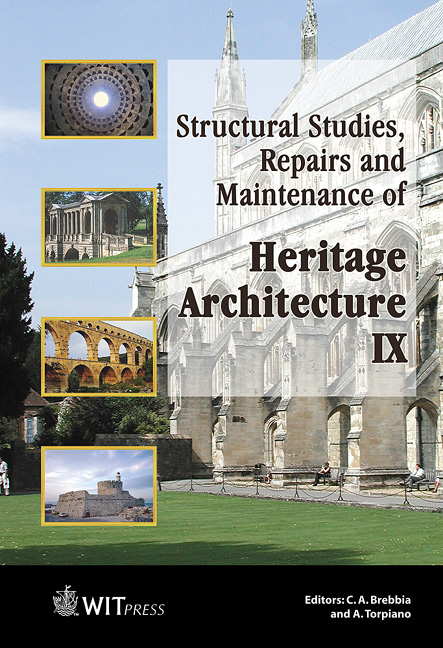Experimental And Numerical Study Of The Long-term Behaviour Of Ancient Masonry
Price
Free (open access)
Transaction
Volume
83
Pages
10
Published
2005
Size
1,595 kb
Paper DOI
10.2495/STR050551
Copyright
WIT Press
Author(s)
A. Anzani, L. Binda & A. Taliercio
Abstract
A study on the time dependent behaviour of the masonry coming from the XVI century crypt of the Cathedral of Monza (Italy) will be described. The simulation of the observed behaviour by a visco-elastic rheological model, including damage variables, will be presented for a subsequent application to construction analysis. Keywords: ancient masonry, creep, viscoelasticity, damage. 1 Introduction The time dependent behaviour of ancient masonry buildings, often characterized by non-homogeneous load-bearing sections, is considered among the factors affecting their structural safety. Together with other synergetic aspects, this proved to be involved in the collapse of some monumental buildings occurred during the last fifteen years. Exploiting the material coming from different ancient structures, several experimental procedures have been adopted to understand the phenomenon, from creep to pseudo-creep tests, and various rheological models have been applied to interpret the results [1]. Here a study on material taken from the crypt of the Cathedral of Monza (Italy) will be described, and the simulation by a viscoelastic rheological model, incorporating damage effects, will be presented. 2 Provenance of the tested material After the plane rearrangement of the Museum of the Cathedral of Monza in 1994, the removed material, resulting from a door opening on the northern wall of the crypt, was collected for experimental testing. According to the historical
Keywords
ancient masonry, creep, viscoelasticity, damage.




